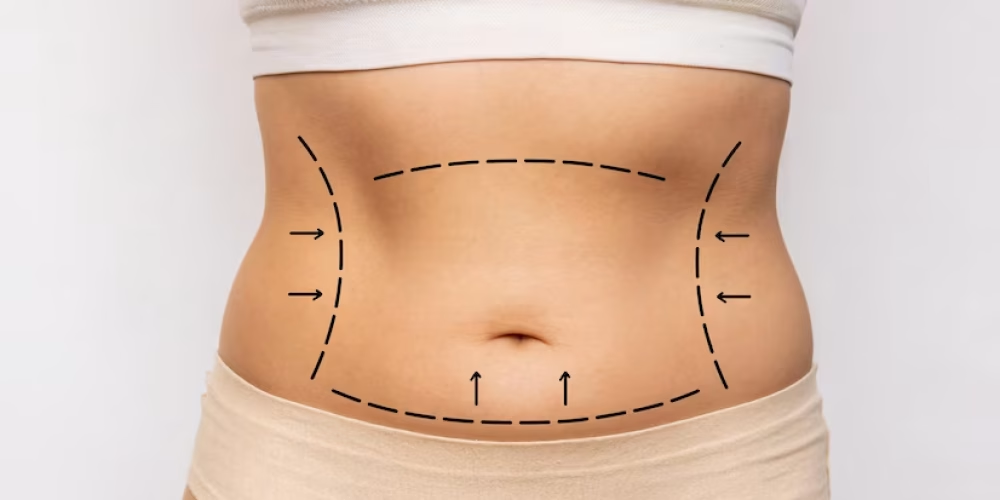Liposuction
- Home
- Liposuction
Have questions? We're here to help!

Liposuction
A Refined Cosmetic Surgery for Fat Removal
Liposuction also called lipo lipectomy or lipoplasty is a surgery that removes hard to lose fat from parts of the body that do not respond to diet or exercise. In India liposuction is one of the most advanced cosmetic treatments. It shapes and contours the body.
Fat removal surgery in India gets rid of fat cells that grow large. This is helpful for people dealing with obesity or certain health problems.
Many patients from other countries choose India for liposuction because it costs less than in developed nations. You get quality care at a price that is easier on your wallet.
What Is Liposuction?
Liposuction is a surgery that takes away fat using suction tools. It is often done with other cosmetic surgeries like tummy tucks or breast reduction to give a better body shape.
Some people follow strict diets and exercise but still have fat that does not go away. If you face this problem liposuction can help by removing small fat pockets to make body lines smoother.
Technology has made liposuction in India less invasive and more effective. All methods use tiny tubes called cannulas. Doctors make small cuts in the skin and use these tubes to suck out extra fat from chosen areas.
Liposuction can target many body parts such as the face neck belly thighs back and buttocks. Best results often happen in smaller spots like under the chin.
Most of the time liposuction does not need you to stay in the hospital overnight unless a large amount of fat is being taken out. It usually uses local anesthesia. You only need sedation when treating large areas.
Common Areas Treated with Liposuction in India:
- Abdomen and waist
- Back and chest
- Face, chin, and neck
- Buttocks and hips
- Inner thighs, calves, and ankles
- Thighs
- Upper arms
Liposuction Surgery Cost in India
Liposuction surgery cost in India usually starts at $3500 USD. This covers basic tests before surgery doctor visits and the operation itself. However room and travel costs are not part of this estimate.
Liposuction Surgery Cost in Various Indian Cities
| City | Starting Price (USD) |
|---|---|
| Delhi | 3,500 |
| Gurgaon | 3,600 |
| Noida | 3,500 |
| Mumbai | 3,700 |
| Hyderabad | 3,500 |
| Chennai | 3,500 |
| Kolkata | 3,500 |
| Bangalore | 3,800 |
Note: The prices listed above represent the base cost of the procedure. However, the total expense of liposuction surgery in India may vary depending on multiple factors.
Factors Influencing Liposuction Surgery Costs in India
Several factors contribute to the overall cost of liposuction surgery in India. The total expense is affected by multiple pre-treatment and post-treatment elements. Below are key factors that can impact the pricing of liposuction surgery:
- Medication Expenses: The cost of prescribed medicines and post-surgical care can influence the total cost of the procedure.
- Patient’s Health Condition: The complexity of the case and the individual’s overall health can determine the treatment duration, affecting the final expense.
- Treatment Duration: Prolonged procedures or multiple sessions may result in higher costs.
- Location of the Procedure: Prices can vary significantly depending on the region and city where the surgery is performed.
- Hospital Stay and Facilities: The length of hospitalization and the level of post-surgical care required can increase costs.
- Government Policies & Subsidies: Healthcare schemes and government subsidies may help reduce out-of-pocket expenses, making treatment more affordable.
- Medical Tourism Packages: Comprehensive packages designed for international patients often include multiple services at a bundled rate, impacting overall costs.
- Hospital Reputation & Infrastructure: Premium healthcare institutions with advanced technology and high-end facilities typically charge higher fees.
- Surgeon’s Expertise & Experience: Renowned plastic and cosmetic surgeons with extensive experience may have higher consultation and surgical fees.
- Diagnostic Tests & Procedures: The frequency and type of diagnostic tests, such as imaging and laboratory evaluations, contribute to the overall treatment cost.
- Choice of Liposuction Technique: Opting for newer, minimally invasive, or advanced surgical techniques may be more expensive than conventional methods.
India provides world-class medical facilities for liposuction surgery, comparable to leading global healthcare centers. Patients traveling to India for treatment benefit from high-quality care, accommodation, meals, and transportation at competitive costs. International patients can potentially save 30-40% on liposuction surgery expenses in India compared to their home countries.
Who Is an Ideal Candidate for Liposuction?
Liposuction is suitable for both men and women seeking to address stubborn fat deposits. In men, it is commonly used for treating gynecomastia (excess breast tissue).
Candidates for liposuction should have realistic expectations, as the procedure targets specific areas of fat but does not prevent future weight gain. Ideal candidates are:
- Individuals with an average or slightly above-average weight.
- Those with firm, elastic skin and good muscle tone.
- People in overall good health.
- Individuals with localized fat deposits that have not responded to diet or exercise.
Types of Liposuction Procedures
- Tumescent Liposuction: The safest and most commonly used technique, in which a saline solution is injected into the fat layer, helping to separate fat from muscle. A cannula then removes the fat through suction.
- Ultrasound-Assisted Liposuction (UAL): This method uses ultrasonic energy to liquefy fat before removal, which also helps tighten the skin.
- Power-Assisted Liposuction (PAL): A specialized cannula with rapid, controlled movements is used to break apart fat cells, making the procedure more efficient with less bleeding and discomfort.
- Laser-Assisted Lipolysis (LAL): Also known as laser-guided liposuction, this technique uses a laser to heat and liquefy fat before it is removed via suction.
Procedure
How is Liposuction Surgery Performed?
Before the Procedure
- Prior to surgery, your surgeon will discuss your goals, expected benefits, and potential risks associated with the procedure.
- A thorough evaluation will be conducted by the medical team, which may include a registered dietitian and a psychologist.
- A comprehensive medical history will be reviewed.
- A series of preoperative lab tests will be performed to assess your readiness for surgery.
- You may be advised to adjust current medications and discontinue aspirin, anti-inflammatory drugs, and herbal supplements to minimize the risk of excessive bleeding.
- If you smoke, quitting is strongly recommended before the procedure.
During the Procedure
The surgeon may use local anesthesia intravenous sedation or general anesthesia based on what is needed
Small hidden cuts are made in the skin
Saline solution is injected into the fat area to loosen fat from muscle
A thin hollow tube called a cannula is placed through the cuts to break up extra fat
The loosened fat is then suctioned out using a surgical vacuum or a syringe attached to the cannula
After the Procedure
The surgeon may leave incisions open to let excess fluid and blood drain
Temporary swelling and fluid retention are common after surgery
The treated area may feel numb, but feeling usually returns within 6 to 8 weeks
Wearing compression garments or elastic bandages helps reduce swelling and reshape the area
Small temporary drains might be placed under the skin to remove extra fluid or blood
Avoid putting pressure on or irritating the healing incisions
Medications may be given to support recovery and prevent infection
As swelling and fluid retention go down, the improved body contour becomes more visible
Post-Surgery Recommendations
Swelling goes down within a few weeks and the treated area looks less bulky. In the next few months you will see more shaping.
As you age your skin may change but liposuction results last a long time if you keep your weight steady.
If you gain weight after the procedure fat can build up in other areas like the belly even if the original area was treated.
Liposuction gives big improvements and the results are usually permanent. Some people may need more treatments to get the look they want.
